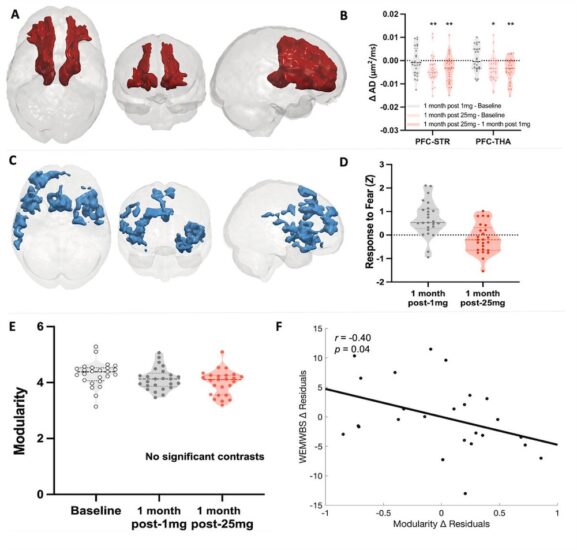How To Create Personalized Long-Term Care Strategies for Ketamine Patients
Developing long-term care plans is essential to ensuring sustained progress and retention for ketamine therapy patients. A personalized approach, combined with ongoing assessments and follow-ups, keeps patients engaged and improves their overall outcomes. Whether you’re looking to streamline follow-up schedules, offer complementary therapies, or create flexible maintenance plans, these strategies will help you craft care plans that support your patients on their healing journey. Here’s a comprehensive guide to help you implement effective long-term care plans in your practice.
Do you work in the ketamine industry? We created the first newsletter just for you: Sign up here!
Implementing long-term care plans in a ketamine clinic involves creating personalized, ongoing treatment strategies that extend beyond the initial treatment phase. Here’s a step-by-step guide to help you implement effective long-term care plans for your patients:
1. Initial Comprehensive Assessment
- What to Do: Start with an in-depth assessment of the patient’s physical and mental health, medical history, and treatment goals.
- How It Helps: This helps tailor the ketamine treatment plan to their specific needs and sets the foundation for long-term care.
2. Establish a Collaborative Treatment Roadmap
- What to Do: Develop a treatment roadmap with the patient that includes the recommended number of initial sessions, follow-up care, and potential booster treatments.
- How It Helps: Giving patients a clear, step-by-step outline of their treatment journey increases their engagement and commitment.
RELATED: Save 15-20% On Ketamine Clinic Office Supplies and Medications
3. Regular Progress Evaluations
- What to Do: Schedule regular evaluations (e.g., after every 3-4 treatments) to assess the patient’s progress. Use outcome-tracking tools like OutcomeMD, Osmind, or other clinical software to document mental and emotional improvements.
- How It Helps: Monitoring progress with data reinforces the patient’s commitment to long-term care and provides actionable insights for adjusting the plan.
4. Create Maintenance Therapy Plans
- What to Do: Once the initial treatment cycle is complete, transition the patient to a maintenance plan. This might involve “booster” ketamine sessions at set intervals (e.g., every 4-6 weeks) depending on their condition.
- How It Helps: Maintenance sessions prevent relapse and reinforce treatment benefits over time, improving long-term outcomes.
5. Incorporate Adjunct Therapies
- What to Do: Offer complementary therapies like talk therapy, mindfulness practices, or lifestyle coaching. Partner with mental health professionals to provide services that support the ketamine therapy.
- How It Helps: Integrating psychotherapy or wellness programs increases the overall effectiveness of ketamine treatment and helps sustain patient engagement in their recovery.
6. Set Up a Follow-Up Schedule
- What to Do: Schedule follow-up sessions well in advance. Automate reminders and create a system for checking in between appointments via email, text, or phone.
- How It Helps: Keeping patients on a structured schedule makes them more likely to follow through on long-term care. Reminders reduce missed appointments and ensure consistency.
7. Customize Long-Term Goals with Patients
- What to Do: Set achievable, personalized long-term goals for each patient. This could include managing specific symptoms, improving quality of life, or reducing the use of other medications.
- How It Helps: Goal-setting motivates patients by providing clear milestones. Personalizing these goals keeps patients invested in their own progress.
8. Encourage Regular Feedback and Adjustments
- What to Do: Ask for feedback after each treatment cycle and be open to adjusting the care plan as needed. Some patients may need less frequent boosters, while others may benefit from increasing adjunct therapies.
- How It Helps: Flexibility allows you to adapt to the patient’s changing needs and ensures the plan remains effective over time.
9. Offer Education and Resources
- What to Do: Provide educational resources on ketamine therapy and its long-term benefits. Host workshops, webinars, or one-on-one educational sessions that reinforce the importance of sticking with the long-term plan.
- How It Helps: Patients who are informed about the ongoing benefits of ketamine therapy and other supportive practices are more likely to remain engaged in the care plan.
10. Provide Ongoing Emotional and Social Support
- What to Do: Create peer support groups, either in-person or online, where patients can connect with others undergoing similar treatments. Ensure that patients feel supported outside their treatment sessions.
- How It Helps: Social and emotional support significantly contributes to long-term engagement and well-being, reducing the chances of patients dropping off.
11. Use Patient Portals or Apps
- What to Do: Implement a patient portal or app that allows patients to track their progress, book appointments, and communicate with the clinic. Ensure they can easily access their treatment records and outcomes.
- How It Helps: A convenient, digital method for tracking progress and booking appointments makes it easier for patients to stick to their long-term care plan.
12. Prepare for Treatment Transition or Tapering
- What to Do: As patients progress, prepare a plan for potentially tapering off ketamine therapy or integrating more self-managed care. This might include reduced-frequency treatments combined with other long-term wellness strategies.
- How It Helps: Offering a structured exit or tapering plan ensures that patients do not abruptly end treatment, leading to a smoother transition and fewer relapses.
By implementing these strategies, you can create comprehensive and flexible long-term care plans that keep patients engaged, improve treatment outcomes, and support sustained well-being.



